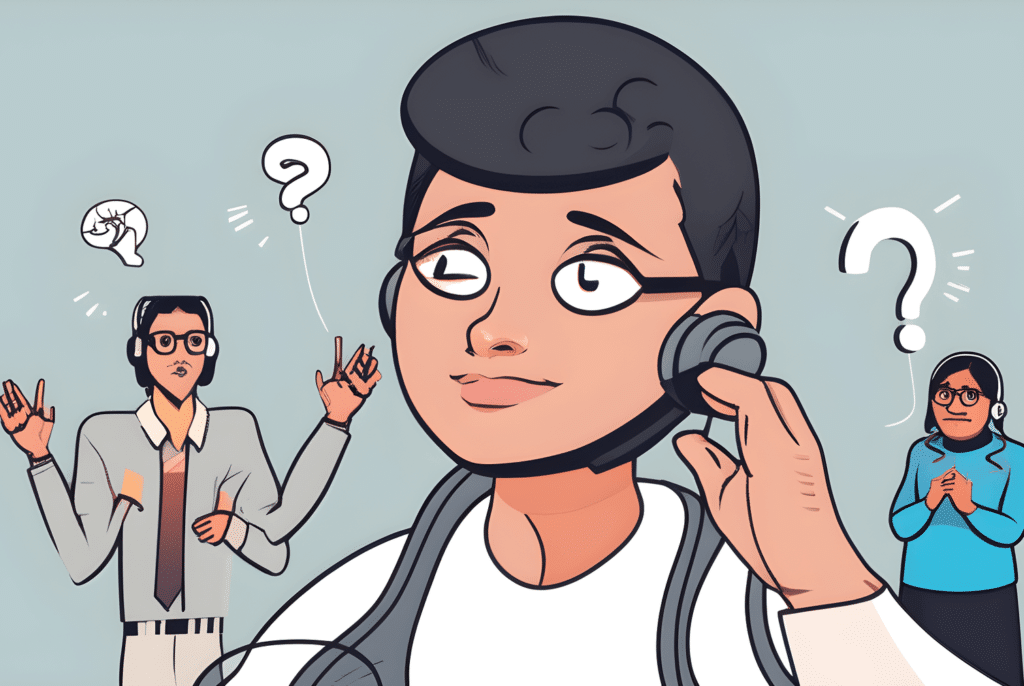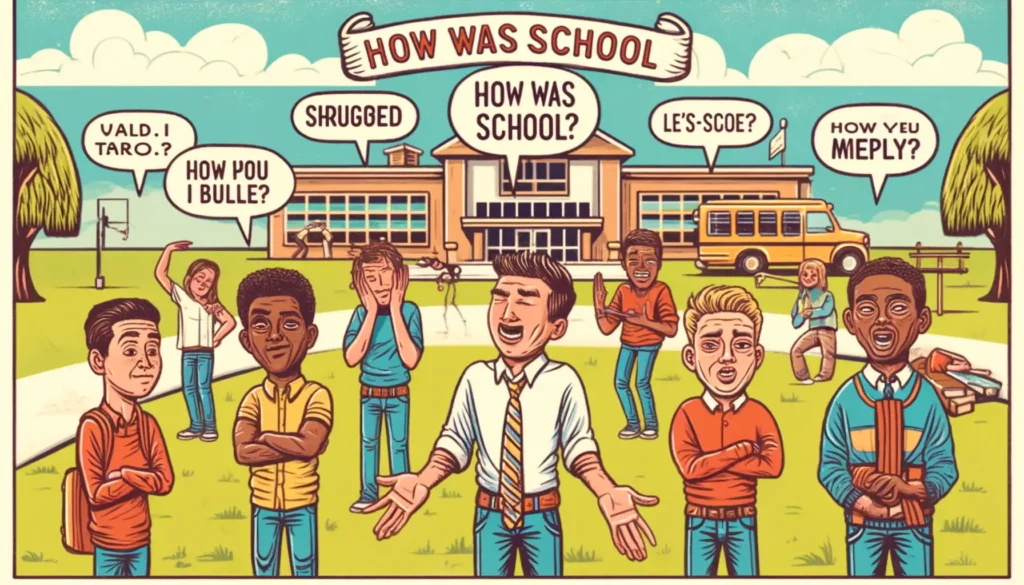Have you ever been asked, “Why?” in a conversation and felt completely stumped? The “Why” question is one of the most common yet challenging questions in communication. Whether you’re answering in a personal, professional, or casual setting, how you respond to a “Why” question can impact your relationships and the flow of the conversation. In this blog post, we’ll explore effective ways to respond to the “Why” question, offer strategies for different scenarios, and look at some important considerations to keep in mind.
Why Do People Ask “Why?”
Before we dive into how to answer the “Why” question, it’s essential to understand why people ask it in the first place. Here are some common reasons:
- Seeking Clarity or Understanding
- Often, people ask “Why?” because they genuinely want to understand your reasoning, thoughts, or decision-making process.
- Expressing Curiosity
- Sometimes, the “Why” question is just a natural way of expressing curiosity about something that caught their attention.
- Challenging a Decision or Opinion
- The “Why” question can also be asked when someone wants to challenge your statement or decision.
- Seeking Justification
- In some cases, people ask “Why?” to request justification for an action, behavior, or belief.
- Testing the Consistency of Your Response
- People might ask “Why?” repeatedly to see if your response holds up or if you’re consistent in your reasoning.
Effective Responses to the “Why” Question
1. Stay Calm and Be Honest
No matter what the “Why” question is about, the best response starts with calmness and honesty. If you have a reason for your actions or beliefs, there’s no need to get defensive or anxious.
- Response 1: “I decided to do this because it feels like the best course of action right now.”
- Response 2: “I understand why you’re asking, and here’s the reasoning behind it.”
- Response 3: “It’s a decision I made based on the information I had at the time.”
- Response 4: “I can explain my reasoning clearly. It’s because of [specific reason].”
- Response 5: “I understand that might seem surprising, but here’s why I think it makes sense…”
2. Break Down the Explanation Clearly
When responding to “Why?” break your answer into understandable steps or components. This approach makes your response feel more organized and reasonable.
- Response 1: “First, I thought about the situation, then I considered the potential outcomes, and finally, I made my decision based on what seemed most logical.”
- Response 2: “Let me explain it in a few parts: 1) I researched the options, 2) I consulted with others, and 3) I weighed the pros and cons before making my choice.”
- Response 3: “I decided based on three factors: time, resources, and impact.”
- Response 4: “It’s a combination of different reasons. First, there was an issue with [factor], and second, [reason] made it the right choice.”
- Response 5: “There were multiple factors that contributed to my decision. Here’s how I thought about it…”
3. Use “I Feel” or “I Think” Statements
When responding to “Why?” in a personal or emotional context, it helps to frame your answer as a personal perspective. This helps others understand that your reasoning is subjective and not necessarily an absolute truth.
- Response 1: “I feel that it’s the right thing to do because [reason].”
- Response 2: “I think it’s important because [explanation].”
- Response 3: “Based on my experience, I believe [reason] is the best approach.”
- Response 4: “Personally, I’ve come to the conclusion that [explanation] is the best choice for me.”
- Response 5: “From my point of view, [reason] is why I chose this option.”
4. Acknowledge the Other Person’s Perspective
Sometimes, people ask “Why?” because they have a different viewpoint, and acknowledging this can build trust and understanding in the conversation. By validating their concerns, you can help make your response more acceptable.
- Response 1: “I understand that from your perspective, it might seem odd, but here’s why I think it’s the best choice.”
- Response 2: “That’s a fair question, and I see why you’d feel that way. Here’s the reason why I chose to do this.”
- Response 3: “You raise a valid point. My reasoning is based on [explanation], but I see where you’re coming from.”
- Response 4: “I get why that seems confusing. Let me explain why I felt it was the best decision.”
- Response 5: “I can see how you might think differently, and I appreciate your viewpoint. However, here’s my rationale.”
5. Use Humor (If Appropriate)
In more casual settings, responding to “Why?” with humor can ease tension and make the conversation more lighthearted. Just be mindful of the situation and the other person’s emotional state.
- Response 1: “Why? Because I said so! Just kidding, here’s why…”
- Response 2: “Well, why not? But seriously, the reason is [explanation].”
- Response 3: “You know, I’ve been asking myself that too, but here’s what I came up with…”
- Response 4: “It’s a long story, but I’ll try to make it short. The reason is [explanation].”
- Response 5: “If only I had a magical answer! But in all honesty, here’s why…”
Handling Repeated “Why” Questions
Sometimes, people will keep asking “Why?” even after you’ve given an answer. This could be because they’re not satisfied with your response or want to dig deeper.
1. Be Patient and Keep Explaining
If you feel the conversation is going nowhere, be patient and keep explaining your reasoning step by step.
- Response 1: “I understand that you’re not convinced yet, so let me explain again from a different angle.”
- Response 2: “I see that my previous explanation wasn’t clear enough. Let me break it down a bit more.”
- Response 3: “I appreciate your persistence. Let me give you a more detailed explanation.”
- Response 4: “I know this is a complex issue, so I’m happy to go over it again if it helps.”
- Response 5: “Let me provide some more details to clarify.”
2. Set Boundaries (If Necessary)
If the repeated questioning becomes uncomfortable or unnecessary, you can set boundaries politely but firmly.
- Response 1: “I’ve explained my reasoning as clearly as I can. If you need more information, we can revisit this at another time.”
- Response 2: “I understand your concern, but I’ve answered as thoroughly as I can right now.”
- Response 3: “I’ve shared my thoughts, and I think I’ve explained it enough for now.”
- Response 4: “I see you’re still unsure, but I believe we’ve gone over this enough for the time being.”
- Response 5: “Let’s agree to disagree for now, and if you have more questions later, we can talk again.”
Table: Dos and Don’ts When Responding to “Why?” Questions
| Dos | Don’ts |
|---|---|
| Be honest and clear in your response | Avoid being defensive or evasive |
| Break your answer into understandable parts | Overwhelm the other person with unnecessary details |
| Acknowledge the other person’s perspective | Dismiss their feelings or concerns |
| Use patience and empathy | Ignore the question or avoid answering |
| Offer clear justification or reasoning | Use vague or non-specific answers |
Why Responding to “Why” Matters
Your response to the “Why” question plays a significant role in building communication and relationships. Here’s why it matters:
- Building Trust: A thoughtful and clear response can demonstrate honesty and transparency, which helps build trust.
- Improving Communication: Clear answers help to avoid misunderstandings and ensure that the conversation remains productive.
- Defusing Conflict: A respectful response to challenging “Why” questions can defuse tension and prevent arguments.
- Enhancing Understanding: Providing explanations helps others understand your viewpoint, which can lead to better cooperation.
- Establishing Authority: By offering well-thought-out responses, you can establish credibility and authority in your area of expertise.
Final Thoughts
The “Why” question is an essential part of any conversation, but it can sometimes feel uncomfortable or challenging to respond to. Whether you’re trying to clarify your reasoning, justify a decision, or simply explain your actions, knowing how to respond thoughtfully and respectfully is key to fostering better communication. By staying calm, being clear, and acknowledging the other person’s perspective, you can turn a potentially awkward question into an opportunity for understanding and connection.



